Pokeweed berries, sometimes mistaken for blueberries due to their small size, may be seen growing along roadsides and in gardens.
As a youngster, I always wondered why my parents stopped me from trying them, but I felt they must have a good reason. I discovered it after reading about pokeweed and other invasive species.
Is it true that pokeweed kills you if you touch it?
Pokeweed is a deadly natural herbaceous plant found across the United States. Another name for it is Phytolacca americana. It’s invasive, grows in various soils, and may reproduce rapidly (up to 50,000 seeds per plant).
There are a lot of these plants, and maybe if they weren’t poisonous, they wouldn’t be an issue. Usually, the seeds are dispersed either when the plant itself sheds them or when birds consume them. Pokeberries have a deceptive appearance but should not be consumed under any circumstances.
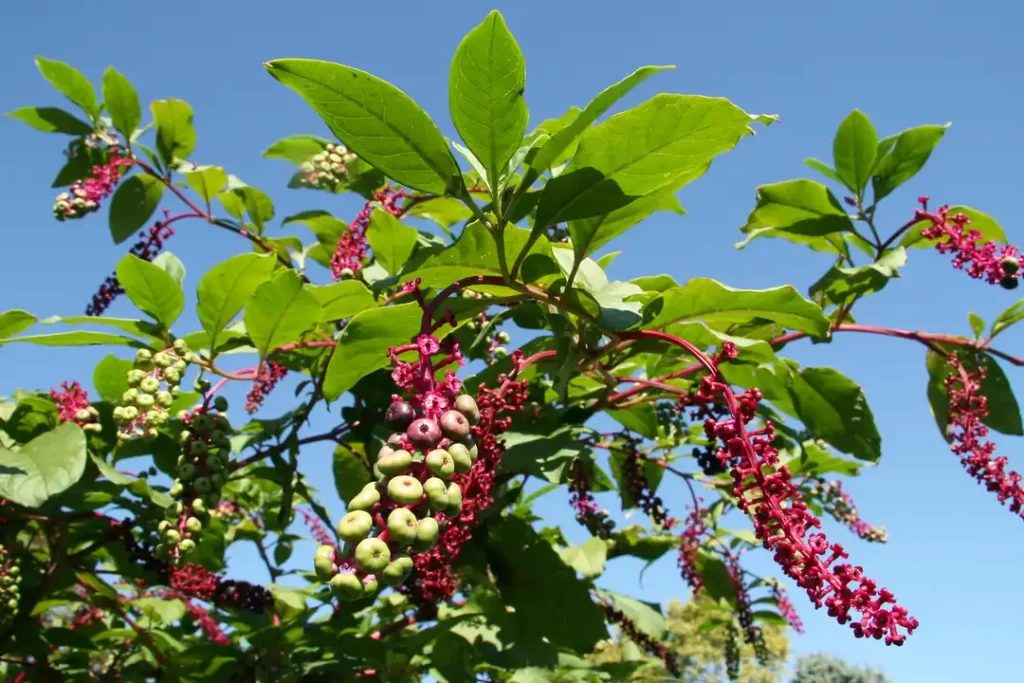
But what about getting pokeweed in your eyes or smelling it?
The whole plant, including the roots and young leaves, is deadly, so you shouldn’t ingest any of it. Old leaves, stalks, unripe and ripe berries, and even seeds should be avoided.
The chemicals from this deadly plant may enter the circulation rapidly after contact with damaged skin, causing respiratory and intestinal disturbances. Many health problems, which we’ll go into further, will follow.
Pokeweed causes a rash that looks like poison ivy or oak if you touch it without gloves. There will be swelling, redness, blistering, and itching. Cases that are mild may be handled at home, while those that are severe should be seen by a doctor.
Read: What’s the most Poisonous Plant in the world?
Exactly how dangerous is this plant?
Toxins such as phytolacca toxin, Phytolaccigenin, and Triterpene saponins may be found in pokeweed, a plant native to North America.
Two to four hours after administration, the saponin glycosides phytolacca toxin and phytolacca genin produce severe gastrointestinal distress in the form of nausea, vomiting, and watery, bloody diarrhea. Hypotension may occur when significant fluid is lost from the digestive tract. Severe poisoning may cause a variety of symptoms, including weakness, unconsciousness, convulsions, and respiratory depression.
Despite the fact that some may argue that pokeweed is not harmful, all of this is supported by scientific evidence. Even though Americans have long relied on pokeweed for both its edible and medicinal properties, modern research and development efforts are focused mostly on improving existing pharmaceuticals.
To avoid becoming food for animals and to thrive in unnatural environments, many invasive plants are toxic. Animals may avoid these plants because of their frightening appearance, but fortunately, they pose no danger to human life.
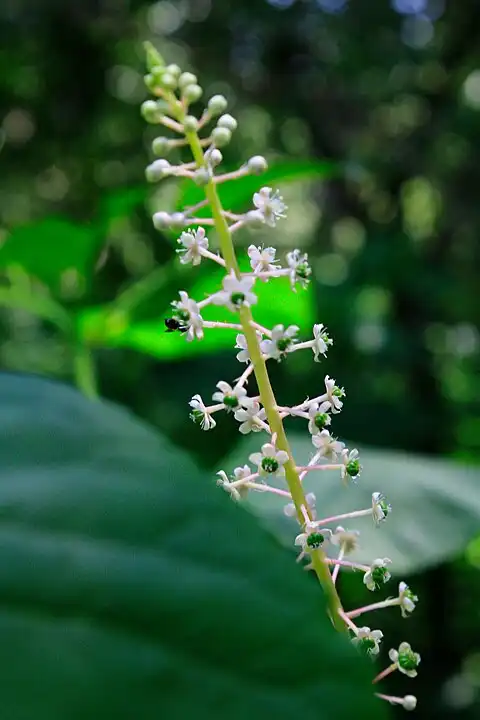
Pokeweed Poisoning Symptoms
Some of the toxins might irritate the skin, but they can also induce gastrointestinal distress, hypotension, headache, nausea, vomiting, diarrhea, incontinence (lack of urine control), seizures, labored breathing, arrhythmia, and muscular spasms. The effects of eating pokeweed or a pokeberry often don’t show up until two to six hours later.
The blood-thinning and blood-pressure-lowering effects of medications are nullified by this poisonous herb. Coumadin is an anticoagulant, while ACE inhibitors are an example of a class of drugs used to treat hypertension. Let’s take a closer look at the physical changes that bring about these symptoms.
1. Seizures
The American Nightshade plant’s phytolacca protein causes a rapid drop in blood pressure, followed by breathing problems and heart discomfort. Seizures may occur after swallowing pokeweed because the lack of oxygen to the brain causes brain tissue to die.
2. Abnormal Heartbeat
Medications used to maintain healthy circulation in the heart, veins, and arteries might be negatively affected by pokeweed, as we’ve discussed. An irregular heartbeat results from a disturbance in blood flow.
Both an increase and a reduction in blood flow are possible outcomes of toxin-induced arterial constriction. Because of this, both blood pressure and heart rate decrease. When an exposed person is active, their heart rate increases because the heart has to work harder to maintain adequate blood flow.
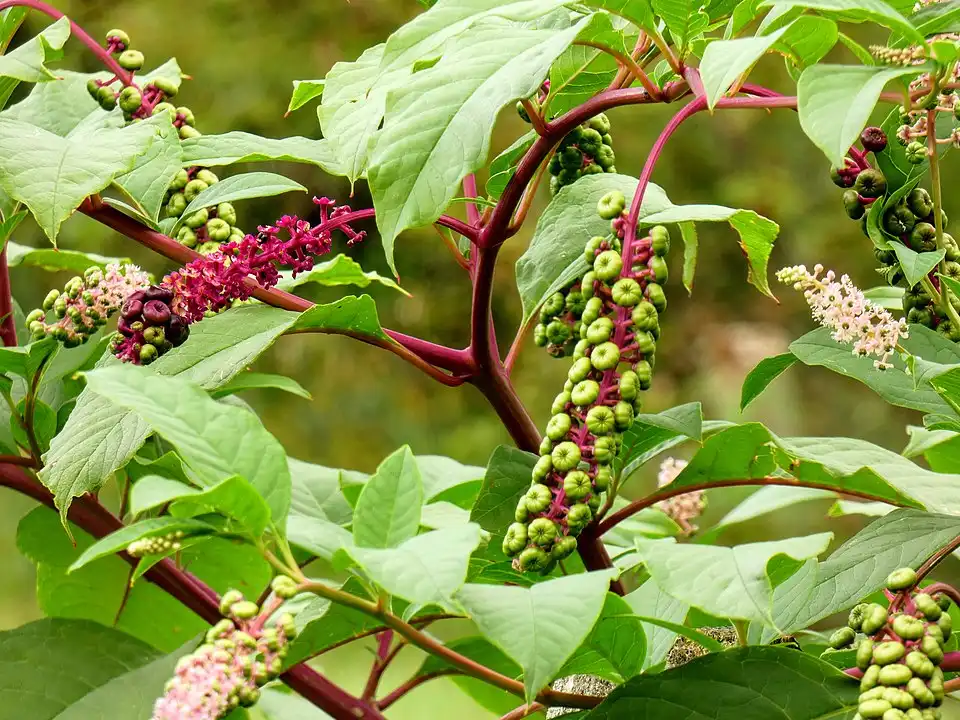
3. Tense Muscles
Low blood pressure is another complication of muscle spasms. Toxins prevent muscles from receiving the blood-producing spasms they need by reducing blood pressure and causing blood vessels to shut. Involuntary muscular contractions, often known as muscle spasms or muscle cramps, are painful and difficult to relieve.
Read: Grow Onion from Seed at Home
What to Do If You Get Poisoned by Pokeweed?
The first step is to assess the level of poisoning; for example, if you handled the plant by mistake and had a moderate rash, you may treat the condition at home. However, if you have had a poke salad or gotten pokeberries all over your skin or in your eyes, you should seek medical attention immediately. If your pet ingests any part of this poisonous plant, contact a poison control center or animal doctor.
Avoid self-induced vomiting at all costs, and keep track of whatever components of the plant you’ve consumed or handled. This is due to the fact that various plant sections have varying degrees of toxicity. No one has ever died from eating pokeweed; however, a toddler who accidentally drank juice made from the plant’s seeds has been reported missing.
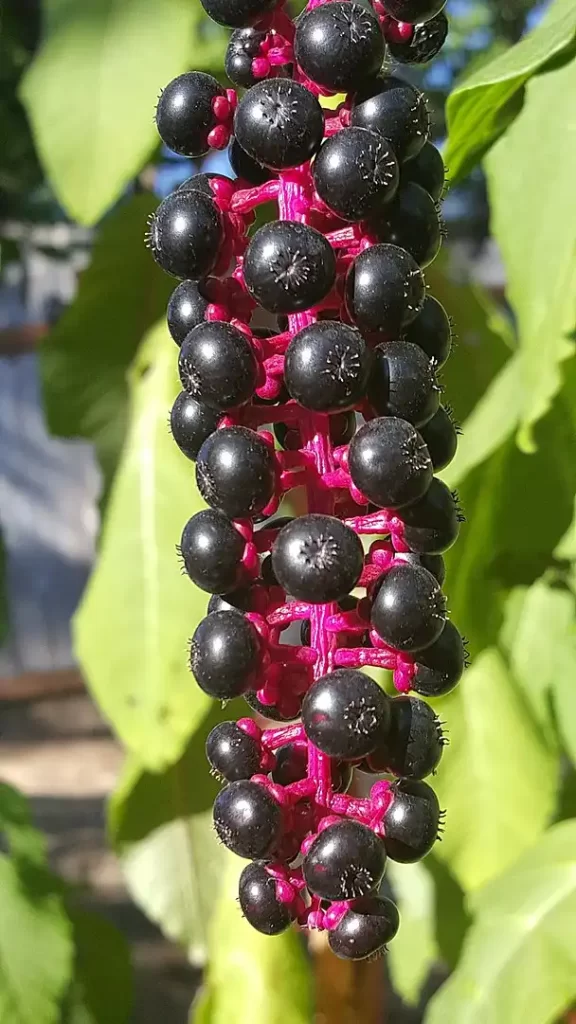
1. Pokeweed Rash Treatment Options
If you’ve been exposed to pokeweed and are experiencing a rash, washing the afflicted area with lukewarm water and soap as soon as possible is your best bet.
2. Change and clean your clothes
Never scrape your skin, since this may cause further problems, including skin rips and secondary infections.
You may use something cool to minimize inflammation and an anti-itch ointment to alleviate the irritating sensation and stop you from scratching.
Go to the emergency room right away if the rash spreads or if the itching becomes severe. This is also true if you have shortness of breath, difficulty swallowing, or chest discomfort.
Identifying Pokeweed
The pokeweed plant is poisonous if ingested, so it’s important to know how to identify it and pull the proper weeds.
It would be rather confusing if a patch of pokeweed grew next to a patch of grapes or blueberries.
In order to positively identify a pokeweed plant, it is necessary to study its leaves. The leaves are between 5 and 10 inches in length, oval in outline, and rather pleasant to the touch. The exterior is dark green, while the interior is light pink.
Flowers of a greenish-white hue appear on the pokeberry plant prior to the development of the fruit. The height of the plant is another useful indicator; it may reach as high as 10 feet. You may also recognize them by the bright red color of their stems.
Even if you can’t see any pokeweed roots, after you’ve dug them out, you’ll be able to identify the plant by its long, white taproot, which gives off the impression of being meaty.
At last, you may have a look at the grape-like pokeweed berries. They cluster together and dangle from the pokeweed’s distinctive red stalk.
Read: How to Propagate Snake Plant
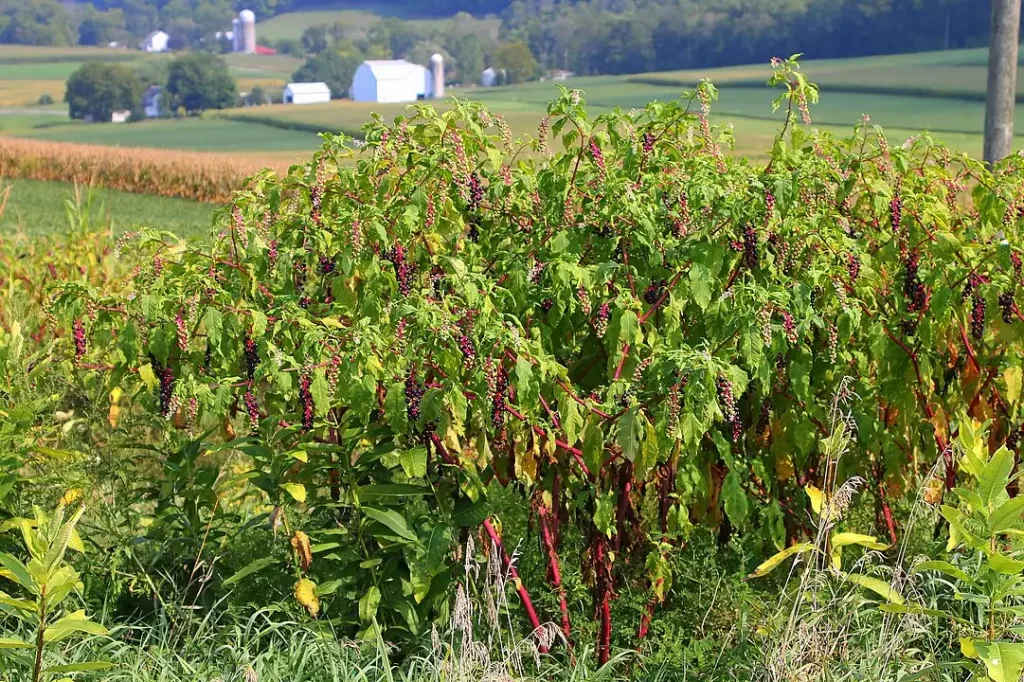
Conclusion
The toxicity of pokeweed, or Phytolacca americana, may be dangerous if the plant is handled improperly or swallowed. The pokeweed plant, with its clusters of berries that look like grapes or blueberries, may seem harmless at first glance, but it really contains a number of dangerous chemicals. This plant is very dangerous, with effects ranging from skin irritation to respiratory and intestinal problems.
It’s dangerous to come into contact with the plant, particularly if your skin is already damaged, or to swallow it. Seizures, heart palpitations, and muscular spasms are only some of the symptoms of pokeweed poisoning, which often manifest between 2 and 6 hours after intake. The plant’s poisons can counteract the effects of several drugs, leading to dysfunction.
Pokeweed toxicity requires prompt medical intervention. Home remedies may be sufficient for treating mild skin reactions, but in the event of severe reactions or ingestion, medical attention should be sought immediately. If you have a pokeweed rash, you should wash the area right away and try not to scratch it.
Traditional cultures have used pokeweed for both food and medicine, despite its harmful nature. However, the risks far exceed the advantages, so eliminating it from populated places is essential. Knowing how to identify the pokeweed plant by its unique characteristics might help reduce the risk of accidental poisoning.
Keep in mind that plants like pokeweed, despite their obvious aesthetic value, may pose a threat to humans. It is our duty to educate ourselves and others about these environmental dangers so that we may all live in peace and health.



